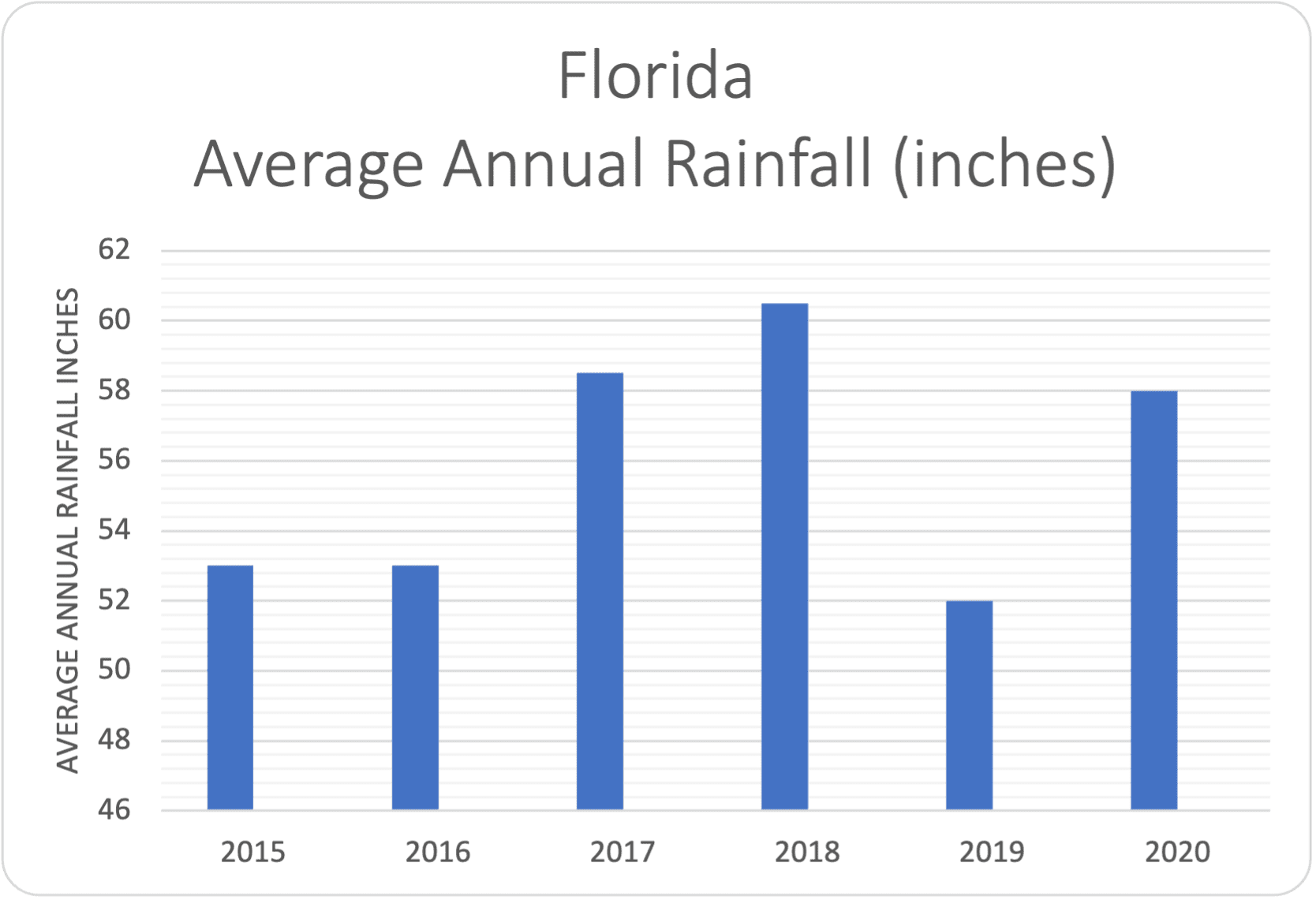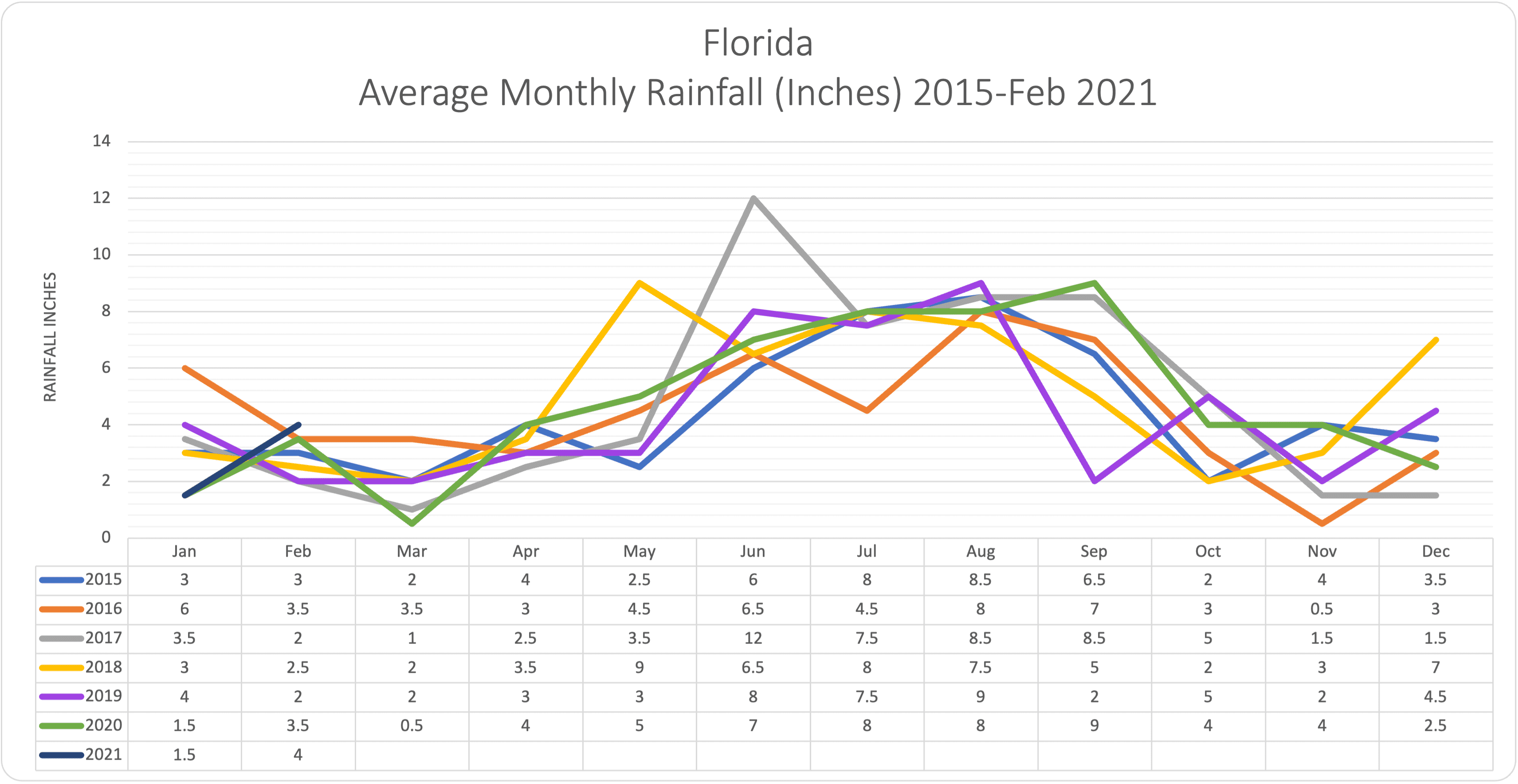
Even with our typical annual rainfall, South Florida’s weather can quickly change from deluge to drought. That’s why conserving water year round is an integral part of managing and protecting South Florida’s water supplies today and for our future generations. Keeping a beautiful, healthy landscape is getting harder but it can be done.
Every type of field will have different needs but the same principles will apply to all. Water is essential to plant growth but also for conditioning the turf to handle and recover from stress caused by heavy use and harsh environmental conditions.
Turf should receive about 1” to as much as 2” of water per week during the growing season. A rain gauge is a very inexpensive management tool that can be used to monitor rainfall. If rainfall provides ½” you will have to provide the additional amount of water depending on your soil and grass and evapotranspiration amount or ET. When watering an established lawn, it’s typically recommended to water until the top 6-8 inches of soil (where most turfgrass roots grow) is wet. Be sure not to overwater your lawn. Most lawns need 1 inch of water per week, either from rain or watering, to soak the soil 6-8 inches deep. The inch of water can either be applied during a single watering or divided into two 1⁄2-inch waterings during the week. Source: Cornell University
We know that Florida's climate is characterized by its wet and dry seasons, with most precipitation occurring in summer and early autum. The Sunshine State also has incredibly high temperatures even in the winter and spring which are for the most part, considered dry seasons.
If you look at Florida's annual average rainfall figures over the past few years, it's very clear that even from year to year the picture varies:

Data from Florida Climate Centre
If you look beneath the surface of the annual overall figures however, you'll find a multitude of differences in rainfall from month to month. In the chart below, for example, although we do expect to see a spike in rainfall across the state in June, look at the 12" recorded in June 2017 - no other June has experienced a level like it between 2015 and 2020. We can also clearly see the months where average rainfall is under 4” for the month - which is a lead indicator to the need for supplemental water.

Data from Florida Climate Center
When to water?
Deep and infrequent watering, once or twice a week, is preferred unless you are in sandy soil that needs more frequent irrigation. Another time when more frequent watering will be necessary is when plants are establishing themselves. At this time it will be critical to keep the seedbed moist to ensure germination and may require daily watering, even several times a day. While it may seem like you can head out to water your lawn any time during the day, your lawn actually needs more specific care. Watering in the morning (before 10 a.m.) is the best time; it’s cooler and winds tend to be calmer so water can soak into the soil and be absorbed by the grassroots before it can evaporate. Source: Cornell University
You'll also be wise to check with your regional water management district and/or local governing authority - they may have more restrictive rules on when irrigation is permitted.
While areas that show signs of stress may cry for help, it may be noticed too late and result in costly sod replacement in addition to the needed repairs; treating false assumptions or symptoms (not the root cause) of what caused the problem may prolong the issue; or, it may have recently rained thus hiding the ineffective irrigation taking place.
Hydro-illogical Cycle is a term coined by Donald Wilhite, founder member of the National Drought Mitigation Center, University of Nebraska, Lincoln in the 1990s.

What is enough and what is too much and what are the factors at play? Rainfall, turf type, soil type (for example sandy, loamy or clay), shading, wind, water quality, former land usage (ex. agriculture), and many more all have an impact on your irrigation needs. The only one of these you have full control of is your irrigation. Simply by making sure you are getting the water you need, where you need it and when you need it, you can overcome the challenges created by these other variables. A good irrigation company has the ability to make all this happen from the water source to the valve to the sprinkler heads!